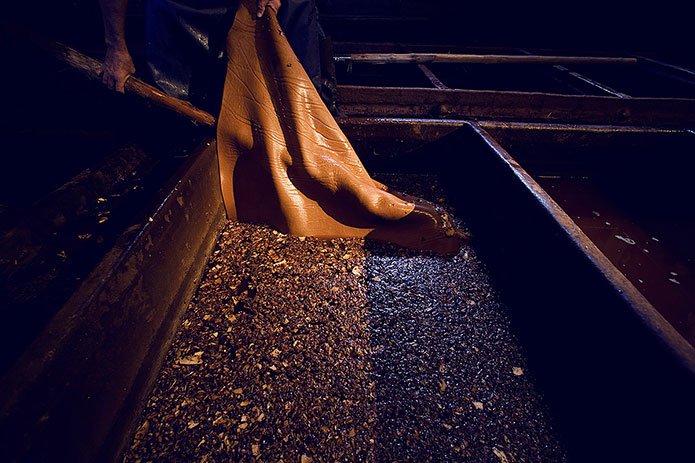
Tanning animal skin into leather is truly an age-old pursuit dating back several millennia. Ancient civilisations produced leather for many different purposes; armour, bags, boats, boots, clothing, harnesses, sandals, scabbards, shoes, vessels and quivers. Every settlement would have had a form of tannery and the animal hides brought there from the surrounding area would be processed in one of two ways; by either mineral (chemical) or vegetable tanning.
Ancient mineral tanneries were especially odorous places, and have become the iconic image of tanning within our historical mind’s eye, conjuring up images and virtual odours of a truly noxious nature; city urchins collecting faeces, mostly dog and pigeon, ‘pisspots’ collected from street corners and brains delivered from local slaughterhouses; all vital but vile ingredients used at the tannery in the process of curing the hides into leather. Working in this form of tannery must surely have been hell. Today, mineral tanning takes the form of chrome tanning, a much less foul smelling, but potentially more noxious process if not carried out correctly, which uses a solution of chemicals, acids and salts. Other “non-chrome” mineral tanning techniques include the use of synthetic agents.
Vegetable tanning, on the other hand, is an environmentally-friendly tanning process but is lesser known, probably as it is less dramatically shocking in its ingredients. Semantically speaking, the notion of tanning comes from the Latin word ‘tannun’ meaning oak bark, which was the original source of tannin, although other trees contain tannin as well, including spruce, chestnut and quebracho. The vegetable tannins do pretty much the same job as the unsavoury ingredients used in mineral tanning (urea, ammonia etc), but the process just takes longer, which is I think a fair trade-off.
Vegetable-tanned leather from oak or spruce is renowned for its quality, being comfortable to use, breathable, flexible, extremely durable and easy on the eye, so is often used for high-end products like hand-made luggage, shoes and expensive equestrian accoutrements. However, there are only a handful of traditional vegetable bark tanneries remaining, and of these, there is only one spruce bark tannery operating in the world today; Böle Tannery in northern Sweden.
Böle Tannery has operated on the banks of the Pite River in Northern Bothnia for over a century, and it has survived changing times of footwear fashion, slumps in demand and competition from modern chrome tanning; so, is a true testament to the longevity of an esteemed traditional craft and the resultant quality of its products.
We are lucky to be able to gain an insight into what it means to be a vegetable tanner today as we talk to Anders Sandlund, fourth generation owner of Böle Tannery, who talks us through his intriguing craft.
Firstly, for those readers who aren’t familiar with Böle Tannery, please can you explain what you do and provide some historical context?
Böle Tannery is a fourth-generation tannery located in the far north of Sweden that uses spruce bark as a tannin to produce vegetable-tanned leather. With most industries there are significant developments in processes of production, but for us at Böle, we have stuck with exactly the same processes as were used in previous centuries here in Sweden.
The tanning industry is one of oldest occupations in the world going back thousands of years and had real importance in peoples’ lives. From the start, the tanning industry as a whole was one of the most polluting industries with a bad reputation, and even today, the modern tanning industry uses lots of chemicals. By adopting the same processes as when Böle Tannery started out in 1899 we are able to produce environmentally-friendly organically-tanned leather, which is more relevant now than ever. We use spruce bark as a tanning agent to straighten out fibres in the leather and raw hides, allowing its transformation into a material that we can use, such as bags and other leather goods, through a complex change of chemicals and fibre structures.
There used to be ten spruce bark tanneries just in our region of Sweden alone, but now there are only less than half a dozen vegetable bark tanneries across Europe, and we’re the last remaining tannery using spruce bark as a tanning agent in the world. Instead of using spruce, the other vegetable tanneries use different types of bark as a tanning agent reflecting the local wood in those areas.
How does spruce bark rate as a tanning agent?
Actually spruce bark is not necessarily the best tanning agent and other bark species possess a greater concentration of tannin, but it’s only a question of allowing more time. Historically, we took what was around us as a raw material, and spruce trees are what grow in the forests around us here in northern Sweden, along with a plentiful supply of pure water from the Pite River. For most tanneries efficiency is about cutting time, but we don’t have to mind that, as we use all the leather ourselves which our craftsmen turn into exquisite leather goods, by hand, so we’re not under any time pressures to produce leather for anyone else, and never have done. In any case, adding more time to some extent will create nicer leather.
What is the character of Böle spruce barked tanned leather that makes it so unique?
We don’t colour the leather; the beautiful natural light, goldish colour is all done by the spruce. The contrasts with darker leather from oak bark tanneries which to my eyes is not so charming.
You can tell a Böle briefcase by its leather. They all have their own subtle nuances, all one-of-a-kind and different. To make one of our briefcases we will need to use an entire hide, and with such an expanse of leather there will inevitably be nicks and dents on the surface. To many people this doesn’t look right, as consumers have been educated that perfect leather has to be spotless, but to us that is not the case. These other leathers are only spotless because they have been painted with a coating to colour blemishes and scars, and this even surface, with nothing on it, is definitely not how leather looks in its more natural state. By showing the leather in its natural state, it means each of our briefcases will look slightly different, with their own distinctive charm, where the story of the cow or reindeer’s lives, and what they have gone through, will come out in the leather. They’re unique.
However, I think the signature of Böle leather is the look and feeling of how it will age over time. Our customers are our best spokesmen for this, and they often tell us that takes 15-to-20 years for the leather to reach its best personality, where you can see scratches and colourings that you couldn’t see before.
The character of using the spruce bark tanning technique is that you get a rich body of leather. With chrome-tanned leather, you get a smooth, soft leather, which you won’t be able to feel the body of, whereas the particles of the spruce bark tanning agents gives our leather a more sturdy and robust feel that will last a long time. You couldn’t use our leather for clothing, well certainly not for innerwear, but for the products that we use it for, it’s perfect.
In our view, ours is the real leather, with a combination of good raw materials and natural scars, but of course not everyone agrees, and this narrows down our market in a way, but we’re proud of the way we do things at Böle, producing the real thing. It’s one of the reasons why we don’t sell leather to anyone else, as it probably wouldn’t be accepted in the industry, which is demanding perfection. We do get asked by shoe brands and leather goods companies to supply them with leather, but they all get the same answer that we consume everything ourselves and we’re unable to supply them.
What hides do you use and where do they come from?
All the hides that we use are a by-product from animals used in the meat industry, which are subject to responsible animal husbandry techniques.
We use Swedish cattle hides, and whenever possible we use mountain cattle from northern parts of Sweden. The cattle higher in the mountains produce better leather as there are less insect bites and there are less people around, so the animals will be outside and have greater room to roam, and less likely to get nicks and cuts from barbed wire, branches etc. Mountain cattle also have a thicker hide, because of the cold, and this gives a better structure of leather with a lot of body. Since we don’t colour our leather to cover up blemishes, it’s more critical to get best material at the beginning, and so we work with farmers and coach them on their husbandry techniques to get the best hides. Given the quality of the hides there’s a lot of demand for them, but for us it’s not a problem, we’re happy to invest in getting the best possible quality hides.
Our reindeer leather comes from either Finland or Sweden, the main habitat for reindeer, although we mainly use Swedish reindeer. The reindeer industry is very small with husbandry carried out via the Sami people; it’s a very volatile business with reindeer slaughter only taking place twice a year. The animals live in the natural environment, and as they are a wild animal it’s very hard to get consistent quality and thickness of the hide. The reindeer provide milk for making into cheese, and the antlers which grow every year are revered within Sami culture. As with Swedish cattle, the reindeer are slaughtered to provide meat, but unlike cattle, most reindeer hides are used for making fur, probably about 70%, and the remainder are used in the leather industry. The Sami people have been using reindeer leather for thousands of years.
Reindeer leather has the same nuances as leather from cattle – you can see the same ‘wildness’ in the leather – but there are some marked differences between the two. Reindeer leather is quite a hard material, but a lot thinner than cow leather, being only 1.2mm thick compared to cow leather which is roughly 3.5mm thick. As a result, we can only use leather from bull reindeer, which produce the thickest hides. Invariably, we’ll use reindeer leather for linings as it’s very soft, but use the thicker cow hide on the outside. Reindeer leather is also perfect for backpacks and rucksacks, as it is a very light material, as well as being deceptively strong and sturdy and long-lasting, and therefore perfect as a travel material. Customers can’t get over how light it actually is. Personally I think items made from reindeer leather look beautiful, and I’d like to do more with it.
You mentioned there were 10 other spruce bark tanneries in your region of Sweden historically; what is it about the immediate landscape and environment that made it ideal for the production of leather?
The Piteå region is a coastal area around a river delta, and as such there were are a lot of animals, which in turn meant a lot of people lived here also. As an agricultural society, it meant there was a high demand for leather products. There was also a big forest industry here too, of which bark is a by-product, and lots of clear nice water coming down from the mountains, both of which the vegetable tanning industry requires. So a combination of good environment and economically a good demand for leather products, that’s what propelled the tanning industry.
The major demand for leather was for ‘beak boots’, which were, and still are, the traditional footwear of the Sami people, the indigenous inhabitants of this part of Sweden. We started out making leather for beak boots a hundred years ago. In those days tanneries made the leather and artisans sat at home making the items. The leather for beak boots was different to the leather we create today, as the bottom part of the shoe wasn’t tanned all the way through, and the middle of the hide was left raw so it would be water repellent. To give an idea as to how much demand there was for leather beak boots back then, in the 1920s, one local shoe maker sold 40,000 pairs of hand-crafted boots in one year alone. That required a lot of vegetable-tanned leather!
This all changed in the 1940s and 1950s when other materials came into fashion, and machine-made was the in-thing rather than hand-made. Leather products could be mass-produced long distances away and brought to the area, and much of this leather would have been tanned using chemical techniques. Most vegetable tanneries in the Böle region went bankrupt or simply shut down. However, in spite of this, my grandfather insisted on keeping going with same techniques; the same methods which we use today.
Can you briefly guide us through the production process of how you tan your leather?
Basically we take animal hides which are de-fleshed and de-haired, which we do ourselves which are put into vats with a natural, soft tanning liquid, which in our case, is derived from spruce bark. We used to de-hair and de-flesh the hides by hand with knives, but this was very time consuming. Now we use machinery to assist us, which doesn’t add anything to the result, but speeds up the time and allows us to focus on tanning work in the tannery.
We can’t put the hides straight into a liquid with spruce bark flakes, as the flakes will block up the pores in the surface of the hide with particles, so we start ‘thin’ of tanning agents so the tannin can get right to the middle of the leather, otherwise it will be tanned on the outside, but raw in the middle.
After a period of time, we move the hides into a slightly stronger solution, and then again, after a period we move them to a stronger solution still. In fact, this continues a number of times, there are six stages in total whereby the hides are immersed in gradually increasing strengths of tanning agents, across a range of different vats (there are 14 vats in total). At a certain point midway through the stages, once the hide has been opened up in immersion, we can greatly increase the size of the tanning particles to get the body that we need. We regularly check the pH of the water, and it’s vital that the hides are subject to a carefully controlled penetration of tanning agents to ensure the leather is tanned consistently.
Throughout the process, we add new, fresh bark, which we’ll replace three or four times over the length of time that the hides are being tanned.
We stir each vat every day to ensure the hides get the necessary exposure with the tanning agent, and we do this manually with a wooden pole to avoid damaging the surface of the hides. The same applies when we move the hides from one vat to another.
We need a high concentration of tanning agent to get the final penetration and stabilising of the fibre in the leather structure.
It normally takes 8 or 9 months to complete the tanning process, but it can depend on the particular animal hide or batch of spruce bark. Temperature is also a determining factor, and in the winter when it’s colder, and the water temperature drops, it will affect the tanning time, taking longer, although not the result. We could speed up the process by using a more concentrated extract from the spruce bark, but that would be an industry in itself, and in any case, since we are only using the leather for ourselves, we can take our time.
Once the hides are tanned, they are shaved, flattened, and nailed onto wooden frames for drying out naturally.
Has the tanning process changed much since your great grandfather’s time, and would he recognise the work you practice today?
It’s about the same, although the tannery is a little more maintained now, and the process actually takes longer. We’ve extended the time of tanning to get a better result, and keep the process more controlled and contained given that the cosmetic requirements are different – a €5,000 briefcase has very different cosmetic requirements to a pair of traditional beak boots!
Do you consider that the production of leather at Böle Tannery is an art, craft or industrial process?
You’ve missed off the word ‘stupidity’! Well, it’s certainly not a form of industrial process, and we’re not even mentioned in the register of industries here in Sweden. It wouldn’t be possible to do what we do in an industrial form as we are so unpredictable, and industry doesn’t like that. I think it’s definitely more of a hand craft, maybe a cottage craft, and a very small one at that. The process is quite straight forward, but you need space to maintain it and I doubt it could ever be grown into an industrial project.
Is there such a thing as the perfect leather?
It’s very subjective as to ‘what is the perfect leather’. From our perspective we cherish the nuances and differences in the leather, whereas for many consumers a scar would symbolise imperfection. It’s a question of difference in taste.
If you ask our saddlers ‘what is the perfect leather’, they would probably define it has having perfect body, smoothness, when it’s cut it feels like butter… that sort of thing. Maybe as few as 1 in a 100 hides would be deemed to be perfect in that respect.
Are there any environmental benefits to vegetable tanning compared to alternatives such as Chrome excel leather?
Absolutely. The tanning industry globally has major challenges coming up to the surface. In the past the textile industry was the punchbag, now it’s the turn of the leather industry. Chrome-tanned leather uses Chromium 3 salts in the tanning process, which is considered safe. The issue is when Chrome 3-tanned leather is disposed of, as if it is burnt, it could give off carcinogenic fumes, as Chrome 3 develops into the dangerous form Chrome 6. There are also problems in unregulated areas of the world as to how the toxic waste water from the chrome tanning process is disposed of, as this is highly dangerous if not treated correctly and it could get into the ground water. There’s also a risk if Chrome 6 was actually used as a tanning agent, which is once was, as if a person’s skin came into contact with the leather, such as wearing sandals, then there is a chance, in theory, that Chrome 6 could penetrate the body. Not many people are aware of the potential dangers of unregulated tanneries. Here in the West, tanneries are very well regulated, but in other parts of the world that is not always the case.
Vegetable-tanned leather, on the other hand, is very environmentally friendly. The process to produce this leather requires very little energy, and very little water also, certainly compared to other types of tanneries which consume very large amounts of water. In fact, we are still using the same vats of water that we used when the tannery opened a century ago, and only top up water to compensate for evaporation. We use clear, nice water from the neighbouring Pite River running alongside our property, which is fed from the Scandic Mountains. In the past, our predecessors, up until the 1960s, would have collected logs en route downstream right outside our workshop to remove the bark, as they were making their way to the Bothnian coast for collection for turning into timber products.
The spruce bark we use as a tanning agent is a by-product of the logging industry derived from the sustainable forests around us. We simply peel off the bark by hand using special tools from the trees that are cut down and then chop the bark up into flakes. Once we’ve finished with the bark, after it’s been used for tanning, it is dried out and used again for landscape gardening as it is biodegradable. It’s a beautiful philosophy that what we take out goes back in the same good shape as we took it and there is a minimum of waste. Ours is the most sustainable method of tanning in the world.
As well as being a tannery, under the same roof you are employ a team of leather craftsmen – saddlers – to produce your own leather goods range under the Böle brand. Can you talk us through this side of the business and some of the products that you make?
Standard production for us is briefcases and rucksacks, as well as a range of smaller items, such as card and glasses cases. We also have a bespoke range, where we make individual items such as rifle cases and even golf bags. Our clients really love what we create, and we’ve heard many stories where people have said they become a companion.
The success of our brand is down to the philosophy of production. If we followed trends and demands of the general market, it wouldn’t work and it’s important we follow the principles of our ethos of production. We’ve given up trying to be someone else, and it’s the world that needs to change, not us! It’s difficult to explain, but people really have to buy our products; it’s very hard for us to sell them.
We use the term saddlers to describe our leather goods craftsmen, although we don’t actually make saddles – well we could, but they’d be very expensive – but it’s an expression to describe the type of leather workers in the US Army who used sturdy leather, copper rivets, wide stitches etc to withstand all sorts of challenges, the same as ours. You have to remember that a hundred years ago, leather products used by men working in the forest, had to be incredibly durable as they were dependent on them for their livelihood and lives even, so they had to be incredibly well made. Sure, it’s not a life or death situation selecting a briefcase these days, but we want to retain the same quality of workmanship as we would have done in the past. Our saddlers are still using age-old techniques to make the items, and they’re all one-of-a-kind and crafted by hand. There are no short cuts. Our saddlers are all very stubborn in that respect.
What do you consider to be the main challenges for Böle Tannery today, and how do you foresee the future?
The main challenge for us is knowledge. We are a niche business operating in a vast global market, and we need to find ways of reaching our target audience to tell them about our well-kept hidden secret. Over the past 5-10 years interest in this type of craft has gone up, particularly in the USA and Japan, which is encouraging. We’re creating a unique, premium product. People aren’t just buying a briefcase but a statement. There’s a story to be told in what we do. A unique and charming story.
We’ll have ongoing challenges like many other craft-based businesses face, such as finding new talent and attracting people interested in this type of work. There are still many people interested in working in craft businesses, but our location, in the north of Sweden, is a challenge for a lot of people. I also think the type of work we do requires a strong mental attitude, particularly for our saddlers who might start working on something, and after day four make a mistake and have to start again – that isn’t for everyone.
From a business perspective, there’s the challenge of working out how to expand in a controlled manner and not letting go of our principles and traditions. We’re a family business and we want to ensure we can keep going like we are for future generations.
As to the future, we’re looking to increase the range of products that we produce from our leather and will hire more artisans to create them. With this increased capacity we’ll require a greater leather output from the tannery. We’d like to expand the range of shops that we sell to, but it’s about finding the right partner that understands our practical and philosophical approach. We’re in no rush to do that, and when it feels right, it will happen. As the 4th generation proprietor of Böle Tannery, I’m not preoccupied in growing big, and have more interest in getting deeper into the process of how we create our leather, refining our products and making even more beautiful products.
Thanks to Anders Sandlund for taking time out of his busy schedule to answer our questions.

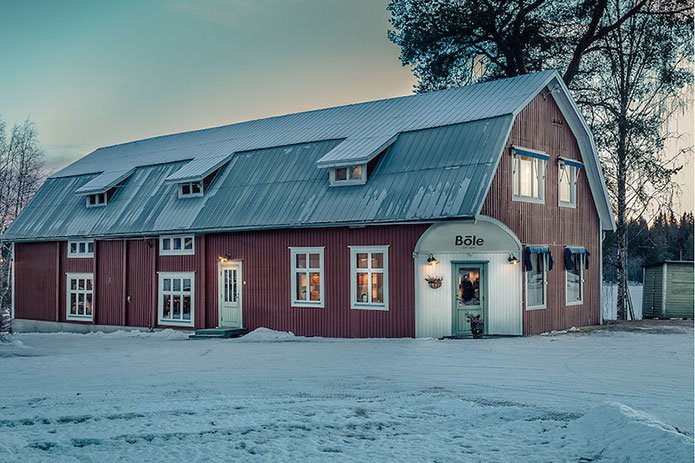
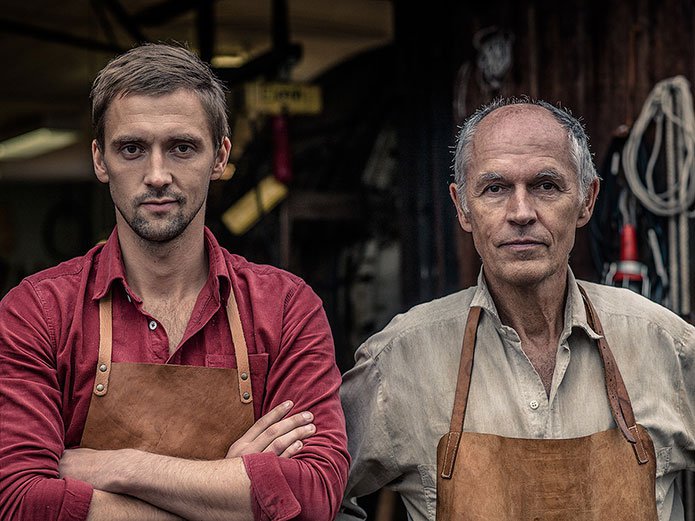
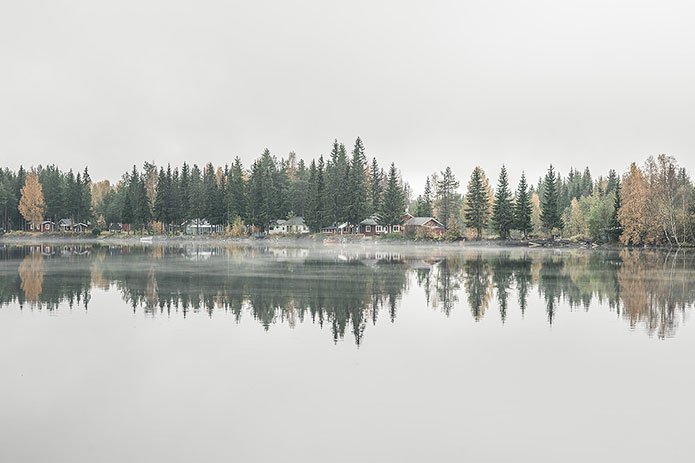
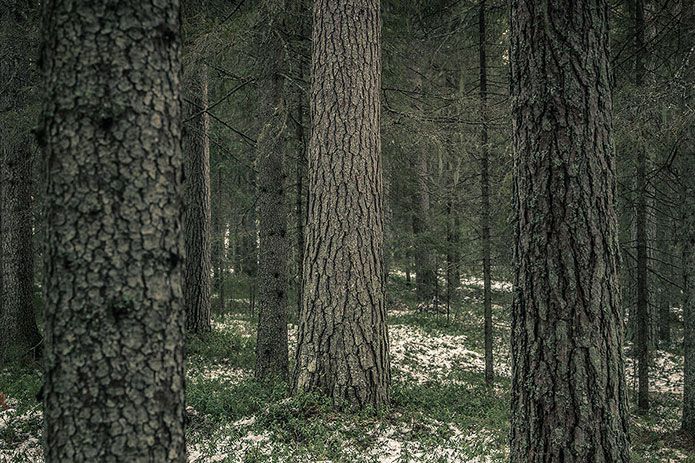
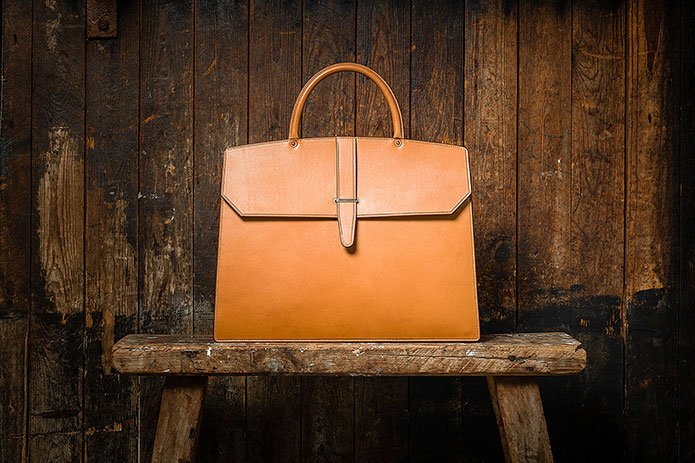
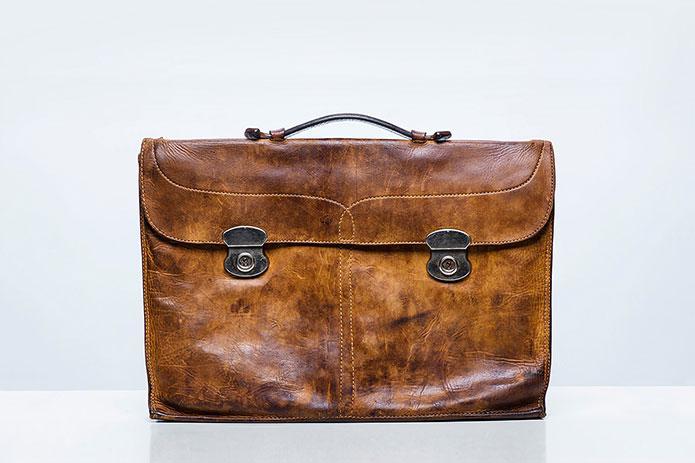
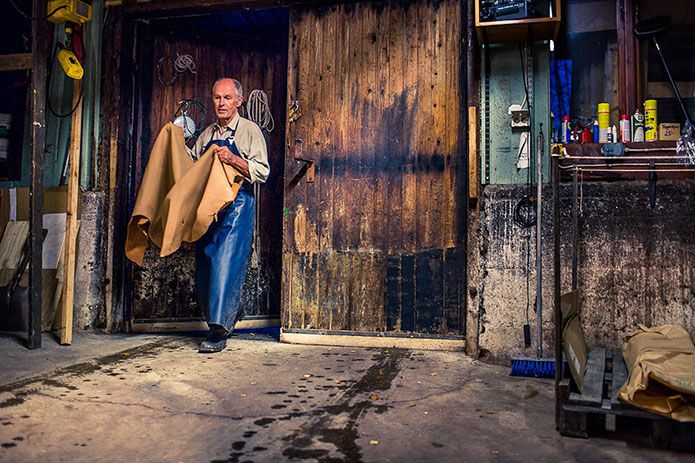
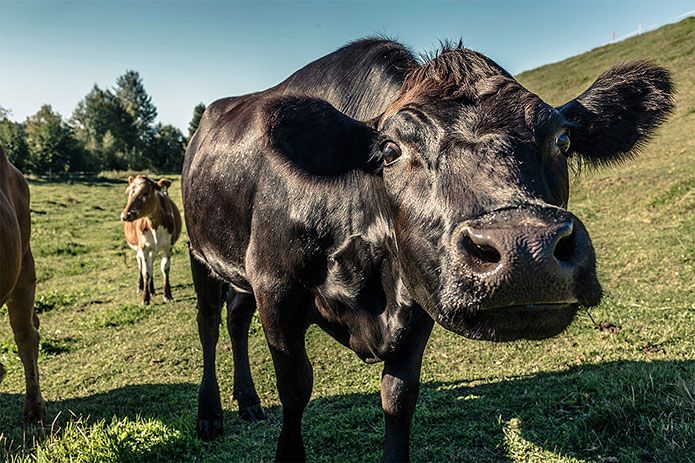
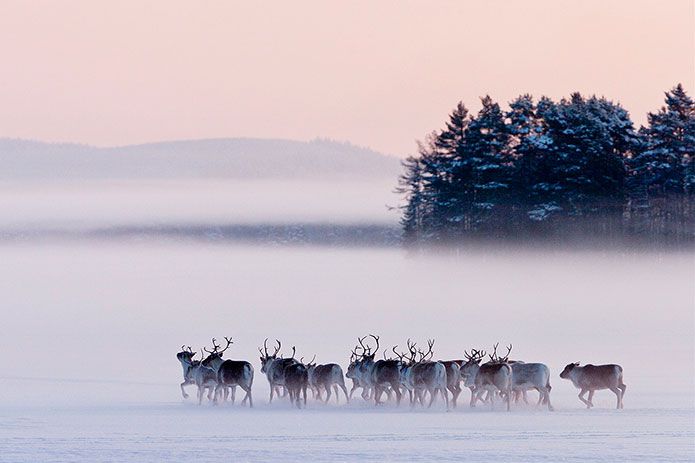
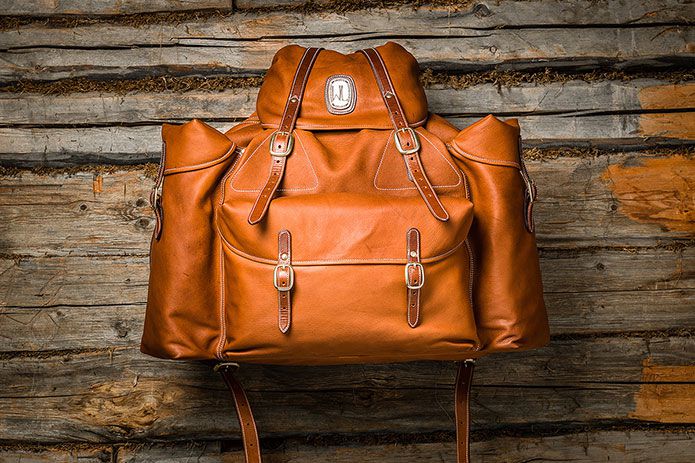
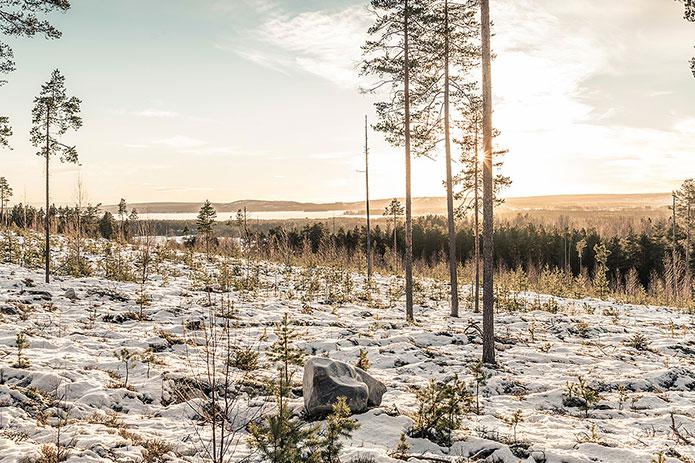
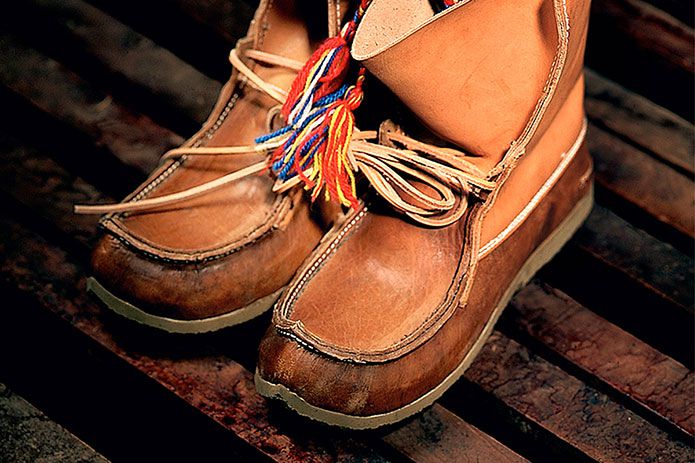
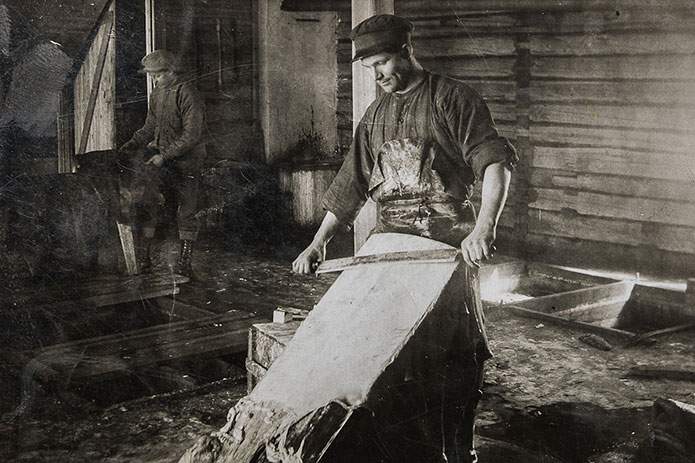
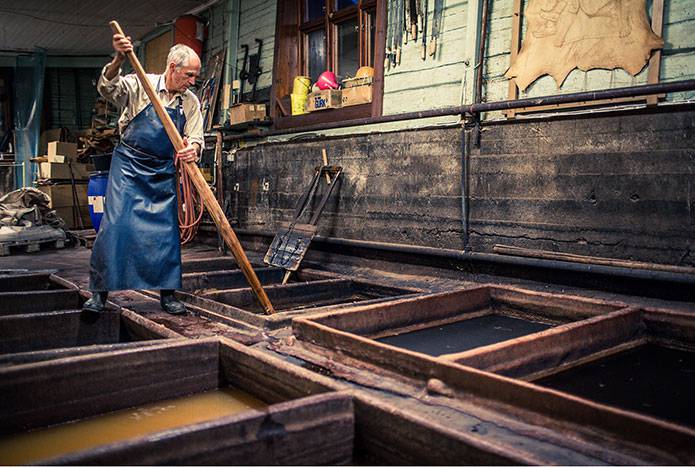
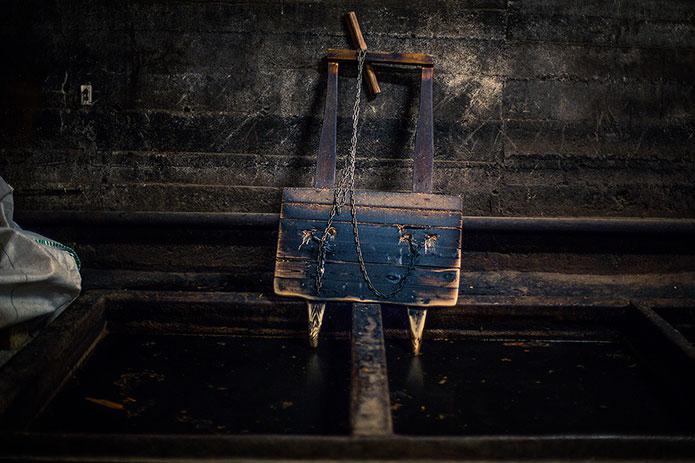
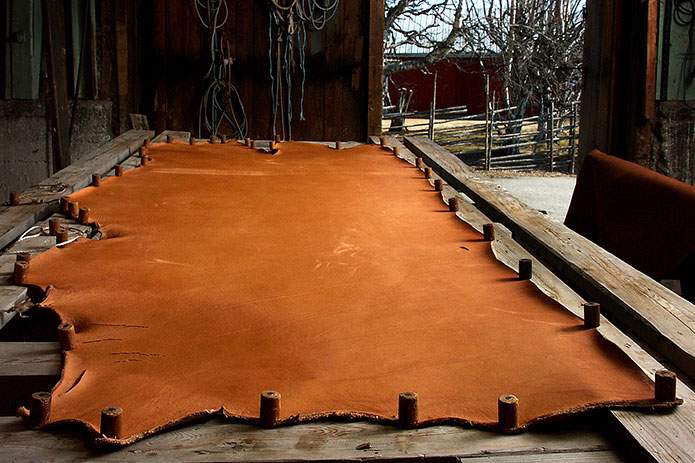
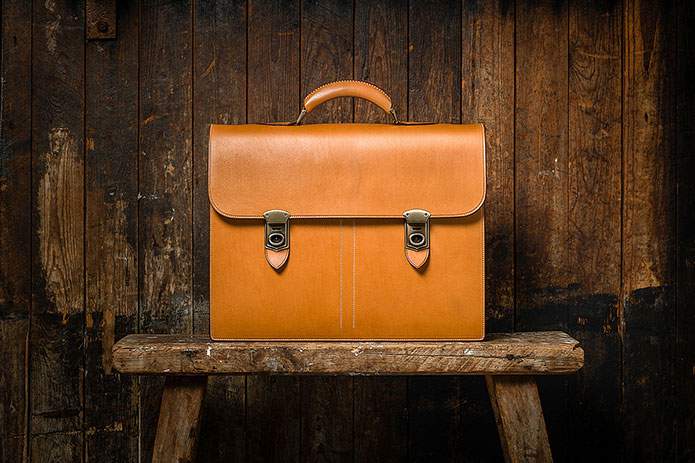
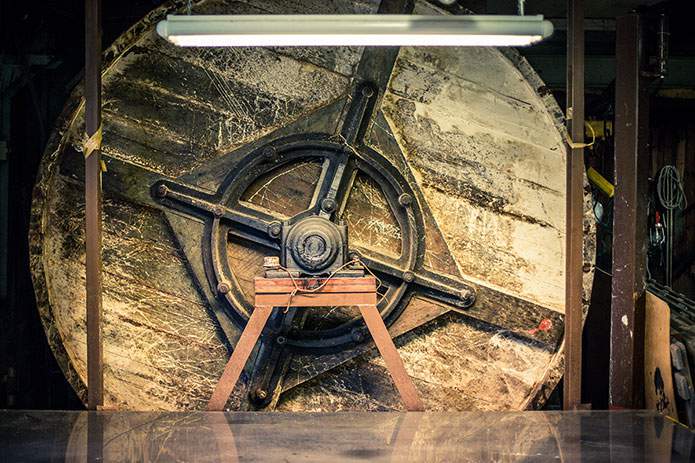
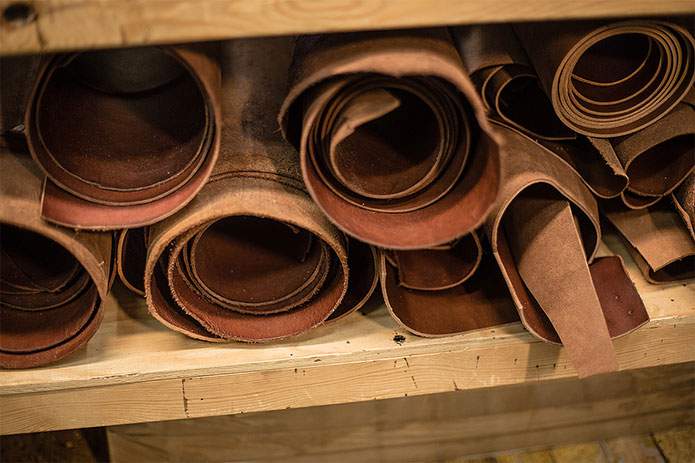
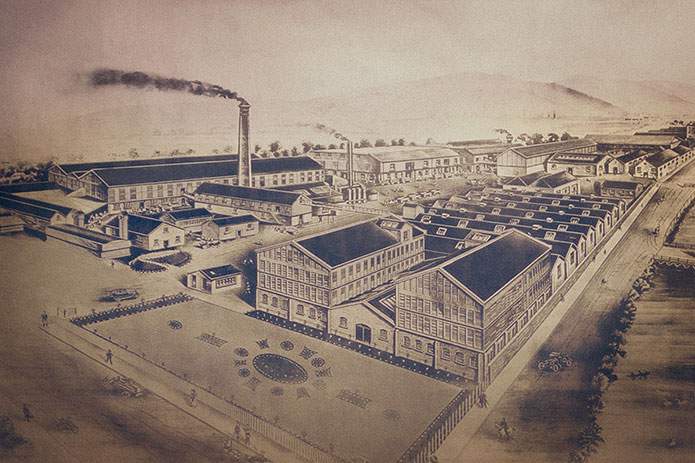
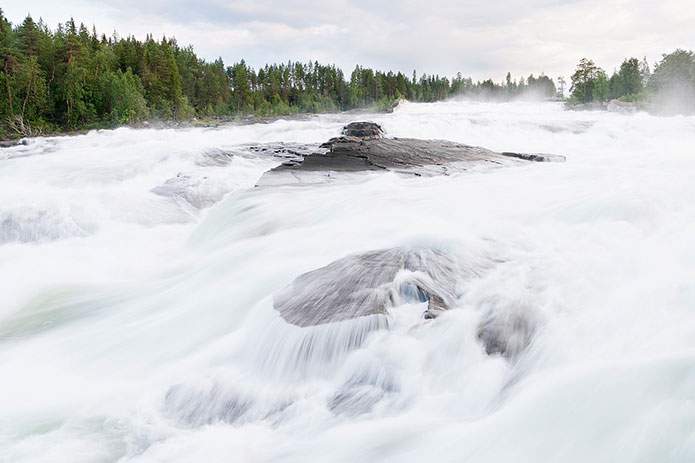
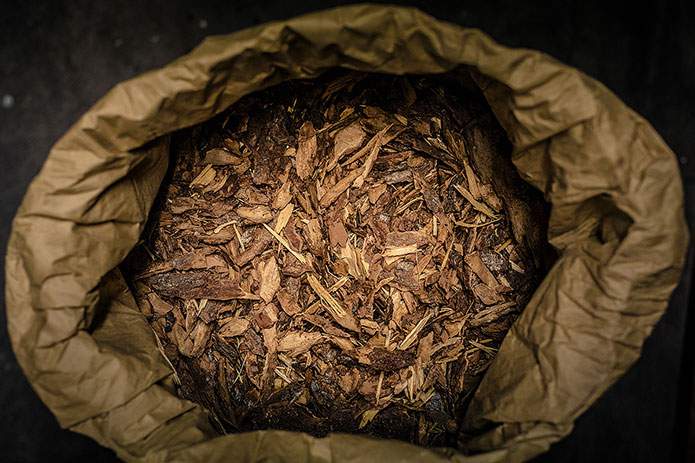
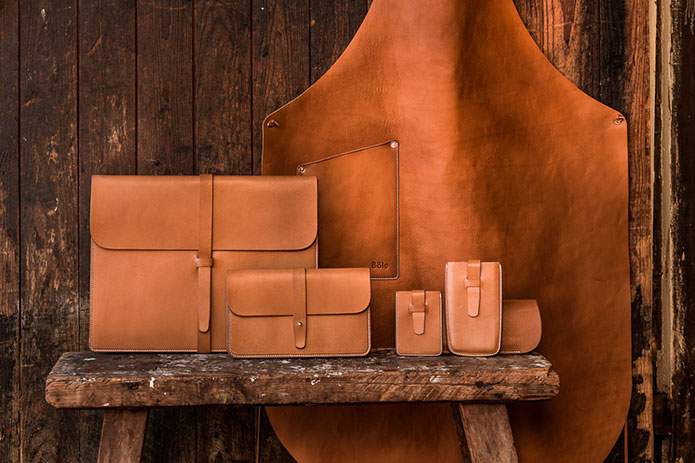
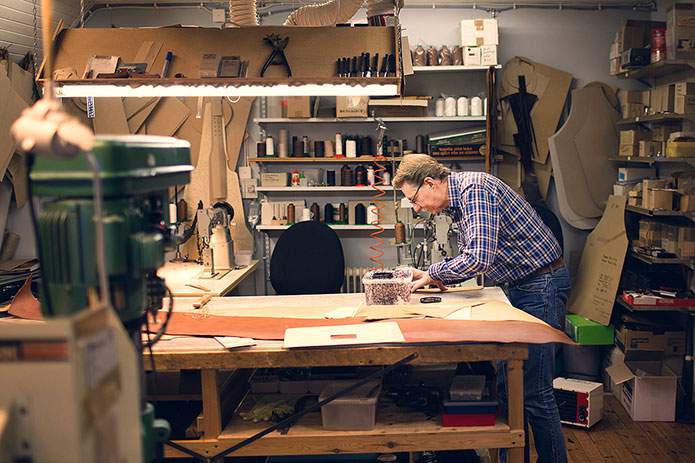
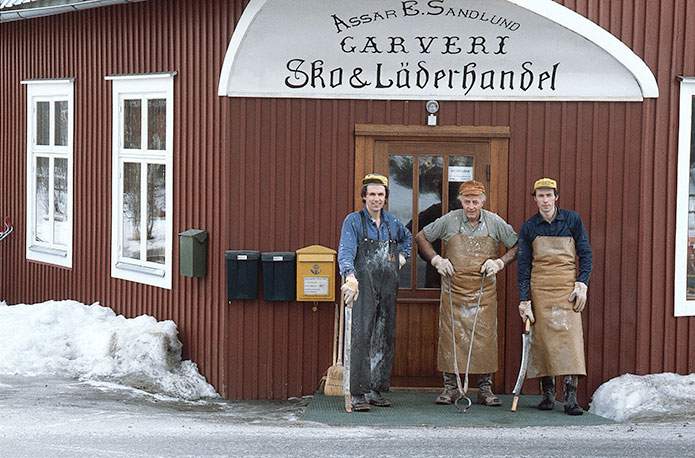









Thursday, January 26th 2017 at 8:34 pm
[…] Our reindeer leather comes from either Finland or Sweden, the main habitat for reindeer, although we mainly use Swedish reindeer. The reindeer industry is very small with husbandry carried out via the Sami people; it’s a very volatile business with reindeer slaughter only taking place twice a year. The animals live in the natural environment, and as they are a wild animal it’s very hard to get consistent quality and thickness of the hide. The reindeer provide milk for making into cheese, and the antlers which grow every year are revered within Sami culture. As with Swedish cattle, the reindeer are slaughtered to provide meat, but unlike cattle, most reindeer hides are used for making fur, probably about 70%, and the remainder are used in the leather industry. The Sami people have been using reindeer leather for …” Read full story on merchantandmakers.com merchantandmakers.com […]
Sunday, February 21st 2016 at 2:15 pm
[…] Part One, Anders Sandlund, the fourth generation owner of Böle, gave us a unique insight into the […]